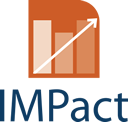(Users) Price reduction
This type of intervention could be implemented by means of several measures. A first set of measures is based on direct price reduction mechanisms that result in a reduction of the prima facie value of the service. Thus, the price set by service providers, which covers all their costs, is not the price actually paid by users who make use of the demand-side support. By being consumer-led, such measures have the advantage of not interfering with the way in which the supply is structured and step up competition among service providers. Furthermore, demand-side support can be fixed (through flat-rate subsidies) or adjusted to users’ income and/or needs in order to grant better equity in the access to those services. Different instruments are on offer.
- Tax deduction. It is important to note that with tax allowance the full price of PHS has to be paid in advance by the user. This may have two implications:
- The economic advantage is less tangible for potential users and therefore less attractive,
- People on low incomes or people who do not pay taxes may be discouraged. Depending on the nature of the tax allowance, it may even provide a benefit that is proportional to household income. However, the anti-redistributive nature of the tax benefit can be overcome by introducing a tax credit in cash to people whose tax is zero or too low to benefit fully from the tax benefit.
Another difficulty faced by people on low incomes is the potential liquidity constraint when low-income households do not receive subsidies for PHS ex-ante. Finally, “deadweight effects” (that come from the fact that some people would enjoy tax benefits even though they would have bought PHS anyway, regardless of tax deductions) must be carefully taken into account. In that regard, it is important to communicate and reflect on the value of ceilings (for example, the maximum amount of PHS bought for which tax deductions will apply).
- The introduction of a direct settlement system to ensure that some demand- or supply-side support (particularly tax shifts) can be received in advance or at the time of purchase.
- Social subsidies implemented mostly under the framework of social care policies. Their efficiency is tightly linked to the level of restriction over what can be purchased and/or who can be hired. They can be provided through a cash payment to the beneficiary, the distribution of social vouchers for access to PHS or the attribution of a PHS “hours package”.
- Financial help from users’ employers. A measure (such as tax deduction for employers, reduction on social contributions and services vouchers distribution, among others) might facilitate access to PHS as a result of financial help from users’ employers. As such, it can contribute to the development of the PHS sector and, at the same time, reduce its burden on public budgets. This innovate funding mechanism, which can also combine several sources of funds from both the public and the private sectors, is particularly interesting in the current climate of economic austerity.
In France and the United Kingdom, through the HR pre-finance CESU voucher and the Childcare voucher respectively, employers have the opportunity to grant their employees a non-monetary bonus or a salary sacrifice which gives them access to PHS (restricted to childcare services in the UK). In both cases, employers benefit from national insurance exemptions or tax reductions.
In addition to direct user-price reduction instruments, another instrument may be used to decrease the price of the services indirectly:
- Opening up/fostering competition within the market and managing the plurality of providers (for-profit, not-for-profit, public). If a range of providers is available, a wide-ranging demand for services can be met. It should be noted that the coexistence of different types of providers (for-profit, not-for-profit, public) can be encouraged in a number of ways, including credit facilities for associations and harmonised tax levels across all providers.
|
Box 1. Tax deduction measures in Finland, France and Sweden Finland: the “kotitalousvähennys” tax credit for domestic help grants users a tax deduction/credit up to € 2 400 per year per person (€ 4 800) for expenses over € 100 on the purchase of household services (i.e. cleaning, gardening, renovation and home repairs, installation and maintenance of support information technology and telecommunication in the home) and on care services for an elderly person or a child in the home. The measure covers either 45 % of expenses when services are bought from an organisation or 15 % of wages and 100 % of employer social contributions when users directly employ the worker. Eligibility is restricted to users who have not already been supported through care policies. France: PHS users are entitled to a tax deduction or a tax credit when they employ a PHS worker or buy services from an approved provider. The fiscal incentives amount to 50 % of the cost up to a ceiling of € 12 000 per tax household, which translates to an actual credit of € 6 000. The ceiling is raised by € 1 500 (up to a maximum of € 15 000) per dependent child and household member over the age of 65. If a household member has a disability card, the ceiling reaches € 20 000. Sweden: the RUT-avdrag (tax deduction for domestic service work) amounts to 50 % of the labour costs up to a maximum threshold of approximately SEK 50 ,000 (€5 450) which is equivalent to a maximum tax reduction of SEK 25 000 (€ 2 715) for each individual in one year. People over 65 years benefit from a higher threshold of SEK 100 000 (€ 10 900). Sweden has the particular feature of having implemented a system in which the user benefits directly from the tax deduction whereas the provider applies directly to the tax authority for the reimbursement of the remaining 50 %. |






